Kenneth C. Davis's Blog, page 34
November 1, 2020
Four Reasons Incumbents Didn’t Win Re-election: Don’t Know Much About® Audio Minutes
What keeps an incumbent president from winning a second-term?
This audioclip offers four reasons from history. For more details on this piece of presidential history, read this post.
https://dontknowmuch.com/wp-content/uploads/2020/10/4Reasons-IncumbentsLose.m4a
STRONGMAN: The Rise of Five Dictators and the Fall of Democracy
“History’s warnings reverberate in this gripping read about five dictatorial strongmen. This complex yet accessible title examines the lives and deeds of Benito Mussolini, Adolf Hitler, Joseph Stalin, Mao Zedong, and Saddam Hussein….
A pitch-perfect balance of nuanced reflection and dire warning.”
In a new Starred Review, Shelf Awareness says:
“Kenneth C. Davis (Don’t Know Much About series) conveys his plentiful knowledge of dictators in this powerful, spine-tingling biographic work that covers five of the world’s most horrifying autocrats. Grounded in thorough research, Strongman expertly explores the fragility of democracy through the devastating reigns of Benito Mussolini, Adolf Hitler, Joseph Stalin, Mao Zedong and Saddam Hussein.”
–Read the full review here
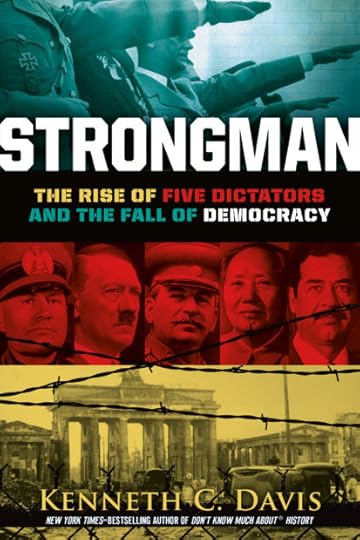
STRONGMAN: The Rise of Five Dictators and the Fall of Democracy, will be published on October 6, 2020.
Order the hardcover and e-book from Holt Books.
An audiobook is available from Penguin Random House.
This is the story of the rise to power of five of the most deadly dictators of the 20th century — Mussolini, Hitler, Stalin, Mao Zedong, and Saddam Hussein.
A review in Booklist says, “Davis does not sugarcoat his material, inviting long thoughts with his assertion that this is a decidedly human story that points to real people as evidence that evil exists in this troubled world.”
In addition to telling how these men took unlimited power, brought one-party rule to their nations, and were responsible for the deaths of millions of people, the book offers a brief history of Democracy and discusses the present threat to democratic institutions around the world.
In a time when Democracy is under assault across the globe, it is more important than ever to understand how a Strongman takes power and how quickly democracy can vanish –even as millions cheer its death.
ADVANCE PRAISE FOR STRONGMAN
“I found myself engrossed in it from beginning to end. I could not help admiring Davis’s ability to explain complex ideas in readable prose that never once discounted the intelligence of young readers. It is very much a book for our time.”
—Sam Wineburg, Margaret Jacks Professor of Education & History, Stanford University, author of Why Learn History (When It’s Already on Your Phone).
“Strongman is a book that is both deeply researched and deeply felt, both an alarming warning and a galvanizing call to action, both daunting and necessary to read and discuss.”
—Cynthia Levinson, author of Fault Lines in the Constitution: The Framers, Their Fights, and the Flaws That Affect Us Today
“A wake-up call to democracies like ours: we are not immune to despots . . . Strongman demonstrates that democracy is not permanent, unless it is collectively upheld. This book shakes that immortality narrative.”
—Jessica Ellison, President of the Minnesota Council for the Social Studies; Teacher Education Specialist, Minnesota Historical Society
Rarely does a history book take such an unflinching look at our common future, where the very presence of democracy is less than certain; even rarer is a history book in which the author’s moral convictions incite young readers to civic engagement; rarest of all, a history book as urgent, as impassioned, and as timely as Kenneth C. Davis’ Strongman.
—Eugene Yelchin, author of the Newbery Honor book Breaking Stalin’s Nose.
Here is a sample of the audiobook version from Penguin Random House audio
NEWS of STRONGMAN – This book has been made a selection of the Junior Library Guild.
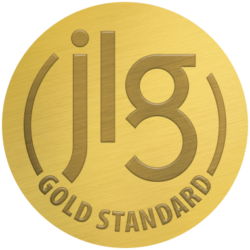
October 31, 2020
Four Reasons Why Incumbents Fail to Win a Second Term
What can the past tell us about 2020?
What keeps single-term Presidents from earning a second term?
Here are America’s twelve single-term Presidents. The list leaves out the eight men who died in office, and the five Presidents (see Note below) who only served out the term of a deceased –in one case, resigned— predecessor and were not reelected in their own right,
2d John Adams (Not reelected)
6th John Quincy Adams (Not reelected)
8th Martin Van Buren (Not reelected)
11th James Knox Polk (Pledged to serve a single term and did not seek a second term)
14th Franklin Pierce (Denied nomination)
15th James Buchanan (Did not seek a second term)
19th Rutherford B. Hayes (Pledged to serve a single term)
23rd Benjamin Harrison (Not reelected)
27th William Howard Taft (Not reelected)
31st Herbert Hoover (Not reelected)
39th Jimmy Carter (Not reelected)
41st George H.W. Bush (Not reelected)
Grover Cleveland deserves a footnote here. The 22nd President was elected in 1884 and then defeated in a controversial election, despite winning the popular vote in 1888. But he won again in 1892 and returned to the White House in 1893 as the 24th President.
Clearly, the first rule about being reelected President is to avoid having the name Adams. We can also set aside James Knox Polk, James Buchanan and Rutherford B. Hayes as exceptions; they served only a single term for differing reasons.
But there are a few common themes here:
•Tough act to follow: Several of the Presidents who failed in a bid for a second term were following an extremely popular President: John Adams (after Washington), Martin Van Buren (Andrew Jackson), William Howard Taft (Theodore Roosevelt), and George H.W. Bush (Ronald Reagan).
Each of these men had to contend with the expectations —and perhaps the “fatigue factor”— of following in the footsteps of four of the most popular Presidents in history. Taft’s case is also unusual –he had to run against his popular predecessor, Theodore Roosevelt, and finished third, with Woodrow Wilson winning the 1912 election.
•Not the People’s Choice: John Quincy Adams won the 1824 election based on the vote in the House of Representatives. His opponent, Andrew Jackson, the popular vote winner, called it the “corrupt bargain” and won four years later.
Although Hayes had pledged not run again, he also became President in 1876, when a special Commission awarded him some disputed electoral votes, denying the popular vote winner, Samuel Tilden. Harrison also won a disputed election in 1888 in which election fraud wass credited with giving Harrison the electors from Indiana.
•Ineffective: Pierce and Buchanan, who both were contending with a nation heading almost inexorably towards Civil War, are often ranked among the worst American Presidents; neither was renominated by their party. Most of the other one-termers score fairly low in presidential rankings. Jimmy Carter was given poor marks for his handling of the Iran hostage crisis. But his loss may have more to do with the next key theme.
•It’s the economy stupid: Many elections are won and lost on pocketbook issues. Opponents called Van Buren “Martin Van Ruin” as the nation endured a long economic downturn. Herbert Hoover presided over the Crash of 1929 and the onset of the Great Depression. Jimmy Carter, saddled with unemployment, inflation, and high interest rates (remember 12%?), and George H.W. Bush were also hurt by severe recessions on their watch.
During his first term, Ronald Reagan was saddled with a deep recession and a high unemployment rate (10.8% in November 1982). Reagan suffered a sharp setback in the midterm elections of 1982. But over the next two years, the economy began to turn and Reagan went on to a landslide victory to secure his second term in 1984.
The history of Presidential reelection fortunes? Maybe it is all about the “benjamins” in the end.
What happens in 2020?
•The incumbent is following a popular president
•He was not elected by popular vote
•He has failed on handling a pandemic
•The economy is in serious trouble
We’ll see if history’s lessons apply.
*Among the Presidents who took office on the death (or resignation) of the President, there are five who did not win a term of their own and they also receive generally low historical ratings:
10th John Tyler (Denied nomination)
13th Millard Fillmore (Denied nomination)
17th Andrew Johnson (Denied nomination)
21st Chester A. Arthur (Denied nomination)
38th Gerald Ford (Lost bid for second term)
October 30, 2020
“Would you like one term or two?”
(This post is revised from one that appeared in February 2011.)
What can the past tell us about 2020?
Two thousand, nine-hundred and twenty-two days. What would you do with that much time?
That’s what a President who is re-elected and fully serves both terms in office gets. But the facts of history, as John Adams said, are “stubborn.” More than a few presidents, including John Adams, desired a second term but were not returned to office.
What keeps single-term Presidents from earning those added 1,461 days in office?
Leaving out the eight men who died in office, and the five Presidents who only served out the term of a deceased –or in one case, resigned— predecessor and were not reelected in their own right, here are America’s twelve single-term Presidents (See the White House for quick bios of each):
2d John Adams (Not reelected)
6th John Quincy Adams (Not reelected)
8th Martin Van Buren (Not reelected)
11th James Knox Polk (Pledged to serve a single term and did not seek a second term)
14th Franklin Pierce (Denied nomination)
15th James Buchanan (Did not seek a second term)
19th Rutherford B. Hayes (Pledged to serve a single term)
23rd Benjamin Harrison (Not reelected)
27th William Howard Taft (Not reelected)
31st Herbert Hoover (Not reelected)
39th Jimmy Carter (Not reelected)
41st George H.W. Bush (Not reelected)
(Grover Cleveland deserves an asterisk here. The 22nd President was elected in 1884 and then defeated in a controversial election, despite winning the popular vote in 1888. But he won again in 1892 and returned to the White House in 1893 as the 24th President.)
Clearly, the first rule about being reelected President is to avoid having the name Adams. We can also set aside James Knox Polk and Rutherford B. Hayes as exceptions; both had pledged to serve only a single term. But apart from the name Adams and the Polk-Hayes oddities, there are a few common themes here:
•Tough act to follow: Several of the Presidents who failed in a bid for a second term were following an extremely popular President. John Adams (after Washington), Martin Van Buren (Andrew Jackson), William Howard Taft (Theodore Roosevelt), and George H.W. Bush (Ronald Reagan). Certainly each of these men had to contend with the expectations —and perhaps the “fatigue factor”— of following in the footsteps of four of the most popular Presidents in history. Taft’s case is also unusual –he had to run against his popular predecessor, Theodore Roosevelt, and finished third, with Woodrow Wilson winning the 1912 election.
•Not the People’s Choice: John Quincy Adams won the 1824 election based on the vote in the House of Representatives. (His opponent, Andrew Jackson, the popular vote winner, called it the “corrupt bargain” and won four years later.) Although Hayes had pledged not run, he also became President in 1876, when a special Commission awarded him some disputed electoral votes, denying the popular vote winner, Samuel Tilden. Harrison also won a disputed election in 1888 against the aforementioned Cleveland in which election fraud is credited with giving Harrison the electors from Indiana.
•Ineffective (polite way of saying bad): Pierce and Buchanan, who both were contending with a nation heading almost inexorably towards Civil War, are often ranked among the worst American Presidents; neither was renominated by their party. Most of the other one-termers score fairly low in presidential rankings. Jimmy Carter was given poor marks for his Presidency, for the Iran hostage crisis. But his loss may have more to do with the next key theme.
•It’s the economy stupid: Many elections are won and lost on pocketbook issues. Opponents called Van Buren “Martin Van Ruin” as the nation endured a long economic downturn. Herbert Hoover presided over the Crash of 1929 and the onset of the Great Depression. Jimmy Carter, saddled with unemployment, inflation, and high interest rates (remember 12%?), and George H.W. Bush were also hurt by severe recessions on their watch.
Among the Presidents who took office on the death (or resignation) of the President, there are five who did not win a term of their own and they also receive generally low historical ratings:
10th John Tyler (Denied nomination)
13th Millard Fillmore (Denied nomination)
17th Andrew Johnson (Denied nomination)
21st Chester A. Arthur (Denied nomination)
38th Gerald Ford (Lost bid for second term)
During his first term, Ronald Reagan was saddled with a deep recession and a high unemployment rate (10.8% in November 1982). Reagan suffered a sharp setback in the midterm elections of 1982. But over the next two years, the economy began to turn and Reagan went on to a landslide victory to secure his second term in 1984.
The history of Presidential reelection fortunes? Maybe It’s all about the “benjamins” after all.
Who Said It? (10/30/2020)
“Facts are stubborn things…whatever may be our wishes and inclinations or the dictums of our passions…”
Future president John Adams in December 1770
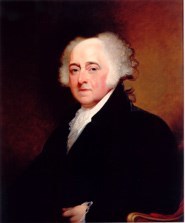
John Adams portrait by Gilbert Stuart
Adams said that as he was defending the “bad guys” –the British soldiers who shot at some Boston townies in what became heralded as the Boston Massacre.
—Facts are stubborn things; and whatever may be our wishes, our inclinations, or the dictates of our passions, they cannot alter the state of facts and evidence: nor is the law less stable than the fact; if an assault was made to endanger their lives, the law is clear, they had a right to kill in their own defence; if it was not so severe as to endanger their lives, yet if they were assaulted at all, struck and abused by blows of any sort, by snow-balls, oyster-shells, cinders, clubs, or sticks of any kind; this was a provocation, for which the law reduces the offence of killing, down to manslaughter, in consideration of those passions in our nature, which cannot be eradicated. To your candour and justice I submit the prisoners and their cause.
-Adams Argument for the Defense: December 3-4, 1770 National Archives
John Adams as born on October 30, 1735 in Braintree, Mass.
October 16, 2020
Pop quiz: What did Washington get when the British surrendered at Yorktown?
(Original post updated 10/16/2020)
Answer: All of the enslaved people in Yorktown who had escaped to the British in hopes of freedom.
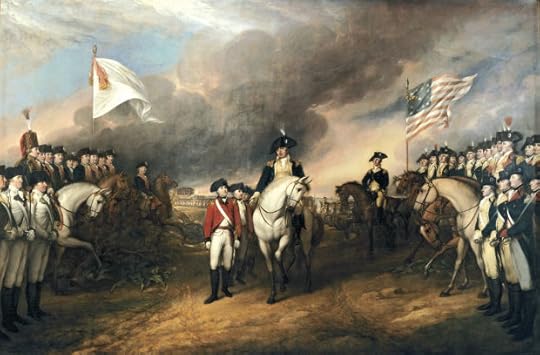
Surrender of Lord Cornwallis by John Trumbull (Source: Architect of the U.S. Capitol)
When the British forces under Cornwallis surrendered to George Washington and his French allies on October 19, 1781, the terms of capitulation included the following phrase
It is understood that any property obviously belonging to the inhabitants of these States, in the possession of the garrison, shall be subject to be reclaimed.
(Article IV, Articles of Capitulation; dated October 18, 1781. Source and Complete Text: Avalon Project-Yale Law School)
Thousands of escaped enslaved people had flocked to the British army during Cornwallis’s campaign in Virginia in what has been called the “largest slave rebellion in American history.”
They had come in the belief that the British would free them. Cornwallis had put them to work on the British defense works around the small tobacco port, and when disease started to spread and supplies ran low, Cornwallis forced hundreds of these people out of Yorktown. Many more died from epidemic diseases and the shelling of American and French artillery during the siege.
The African Americans in Yorktown included at least seventeen people who had left Washington’s Mount Vernon plantation with the British, as well as members of Thomas Jefferson’s enslaved community also captured earlier in 1781. They were all returned to bondage, along with thousands of others as Virginian slaveholders came to Yorktown to recover their “property.”
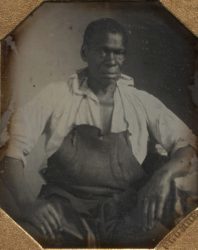
Isaac Granger Jefferson at about age 70 (Courtesy: Tracy W. McGregor Library of American History, Special Collections, University of Virginia Library)
Among them was Isaac Granger Jefferson, a five-year-old boy who was returned to Monticello and later told his story.
The stories of some of the people “reclaimed” by Washington are told in my book, IN THE SHADOW OF LIBERTY: The Hidden History of Slavery, Four Presidents, and Five Black Lives.

The Battle of Yorktown and role of African-American soldiers there –as well as the fate of the enslaved people in the besieged town — are featured in THE HIDDEN HISTORY OF AMERICA AT WAR: Untold Tales from Yorktown to Fallujah.

The Hidden History of America At War (paperback)
“A fascinating exploration of war and the myths of war. Kenneth C. Davis shows how interesting the truth can be.” –Evan Thomas, New York Times-bestselling author of Sea of Thunder and John Paul Jones
October 13, 2020
Student Town Hall- “Hear Our Voices” October 20
JOIN A STUDENT TOWN HALL HERE: YOUTH VOICES — A STUDENT TOWN HALL
OCTOBER 20, 2020 7 PM ET
With 2020 being an election year, there are many topics and questions on the minds of our students.
Join me with National Council for the Social Studies President, Stefanie Wager, in the first NCSS Virtual Town Hall to hear directly from students about their concerns and question
What issues matter most to you?
Do you see yourself in the political process?
How well does our election process work for you, and how could it be improved?
What do you see as the future of democracy in America?
Does America’s two-party political system work, or can it be changed?
Is 18 the “right” voting age?
Is democracy in peril in our current partisan environment?
October 10, 2020
Book Excerpt- “Strongman: The Rise of Five Dictators and the Fall of Democracy”
Democracy is not a spectator sport. It requires work, participation, and sometimes sacrifice. And it can be very fragile.

This is an excerpt from my new book, Strongman: The Rise of Five Dictators and the Fall of Democracy, published in the October issue of Social Education, the journal of the National Council for the Social Studies (NCSS).
Learn more about the book, published on October 6, 2020, here
SE-Oct-2020-Davis-FIN
October 6, 2020
STRONGMAN: The Rise of Five Dictators and the Fall of Democracy
First prepublication review is a Starred review from Kirkus Reviews
“History’s warnings reverberate in this gripping read about five dictatorial strongmen. This complex yet accessible title examines the lives and deeds of Benito Mussolini, Adolf Hitler, Joseph Stalin, Mao Zedong, and Saddam Hussein….
A pitch-perfect balance of nuanced reflection and dire warning.”

STRONGMAN: The Rise of Five Dictators and the Fall of Democracy, will be published on October 6, 2020.
Order the hardcover and e-book from Holt Books.
An audiobook is available from Penguin Random House.
In it, I recount the story of the rise to power of five of the most deadly dictators of the 20th century — Mussolini, Hitler, Stalin, Mao Zedong, and Saddam Hussein.
A review in Booklist says, “Davis does not sugarcoat his material, inviting long thoughts with his assertion that this is a decidedly human story that points to real people as evidence that evil exists in this troubled world.”
In addition to telling how these men took unlimited power, brought one-party rule to their nations, and were responsible for the deaths of millions of people, the book offers a brief history of Democracy and discusses the present threat to democratic institutions around the world.
In a time when Democracy is under assault across the globe, it is more important than ever to understand how a Strongman takes power and how quickly democracy can vanish –even as millions cheer its death.
ADVANCE PRAISE FOR STRONGMAN
“I found myself engrossed in it from beginning to end. I could not help admiring Davis’s ability to explain complex ideas in readable prose that never once discounted the intelligence of young readers. It is very much a book for our time.”
—Sam Wineburg, Margaret Jacks Professor of Education & History, Stanford University, author of Why Learn History (When It’s Already on Your Phone).
“Strongman is a book that is both deeply researched and deeply felt, both an alarming warning and a galvanizing call to action, both daunting and necessary to read and discuss.”
—Cynthia Levinson, author of Fault Lines in the Constitution: The Framers, Their Fights, and the Flaws That Affect Us Today
“A wake-up call to democracies like ours: we are not immune to despots . . . Strongman demonstrates that democracy is not permanent, unless it is collectively upheld. This book shakes that immortality narrative.”
—Jessica Ellison, President of the Minnesota Council for the Social Studies; Teacher Education Specialist, Minnesota Historical Society
Rarely does a history book take such an unflinching look at our common future, where the very presence of democracy is less than certain; even rarer is a history book in which the author’s moral convictions incite young readers to civic engagement; rarest of all, a history book as urgent, as impassioned, and as timely as Kenneth C. Davis’ Strongman.
—Eugene Yelchin, author of the Newbery Honor book Breaking Stalin’s Nose.
NEWS of STRONGMAN – This book has been made a selection of the Junior Library Guild.

October 5, 2020
When a President Asks Americans to Sacrifice
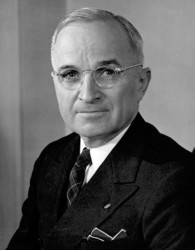
President Harry S. Truman
(Photo: Truman Library)
On October 5, 1947, President Harry S. Truman gave the first-ever televised address from the White House.
That’s an interesting fact in itself. Television was still a novelty and there were only some 44,000 sets in American homes. Most Americans still got their news from the radio and that would rapidly change as television became a fixture in the American landscape.
But more remarkable is what he said. The president asked Americans to make a sacrifice.
Truman requested Americans refrain from eating meat and eggs on different days to help stockpile food supplies as post-war Europe struggled to recover from the ravages of World War II.
The situation in Europe is grim and forbidding as winter approaches. Despite the vigorous efforts of the European people, their crops have suffered so badly from droughts, floods, and cold that the tragedy of hunger is a stark reality.
The nations of Western Europe will soon be scraping the bottom of the food barrel. They cannot get through the coming winter and spring without help–generous help-from the United States and from other countries which have food to spare.
I know every American feels in his heart that we must help to prevent starvation and distress among our fellow men in other countries…
It is simple and straightforward. It can be understood by all. Learn it–memorize it–keep it always in mind. Here it is: One: Use no meat on Tuesdays.
Two: Use no poultry or eggs on Thursdays.
Three: Save a slice of bread every day.
Four: Public eating places will serve bread and butter only on request.
Complete Text and Source: Harry S. Truman, Radio and Television Address Concluding a Program by the Citizens Food Committee Online by Gerhard Peters and John T. Woolley, The American Presidency Project October 5, 1947.
The effort was largely symbolic and was a prelude to the far more ambitious Marshall Plan, which had a much greater impact on post-World War II Europe. Officially known as the Economic Recovery Act of 1948, it was signed into law by Truman in April 1948.
This piece of history is all the more striking during the current presidency and a pandemic. More than 200,000 people have died. Large numbers of Americans are out of work. Families are on food lines. Can you imagine anyone in this government urging a sacrifice for the public good?
It would be a great reminder of the “better angels of our nature.” But what are the chances?



